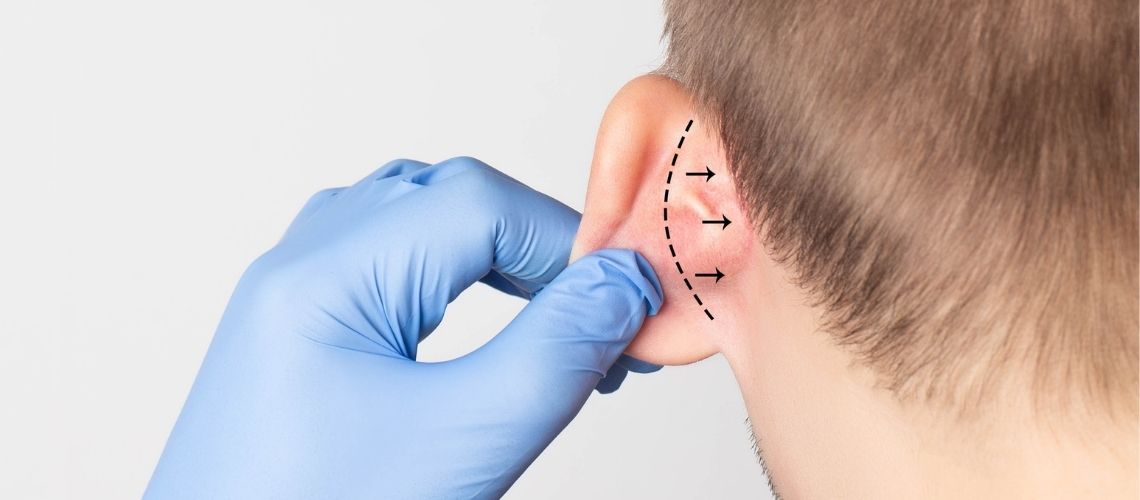Otoplasty, a procedure addressing protruding or misshapen ears, has gained popularity for its transformative results. A smooth recovery is essential for optimal outcomes. Let’s explore the phases of recovery and effective strategies for post-operative care.
Immediate Post-Surgery Care
Right after otoplasty, it’s normal to experience localized pain and swelling around the ears. To aid healing, a compression garment is often recommended, providing protection and support. It’s essential to follow the prescribed medication regimen, which might include antibiotics to prevent infection and manage pain. During this phase, maintaining proper hygiene around the surgical site is crucial. Gently cleaning the area as per your surgeon’s instructions can help ward off any potential complications. Adhering to these guidelines in the immediate post-surgery period will set the stage for a smoother recovery process and contribute to achieving the desired results from your otoplasty procedure.
The Initial Week
During the initial week following otoplasty, it’s common to experience localized discomfort and swelling around the ears. This is a natural part of the healing process as your body responds to the surgical changes. A compression garment is typically worn to provide support and protection to the treated area. Pain management is aided by adhering to prescribed medications, including antibiotics if recommended. The recovery headband comes into play during this period, ensuring that your ears remain in a stable position and minimizing movement that could hinder healing. By the third day, you’ll likely notice a reduction in the initial swelling and discomfort. It’s crucial to follow your surgeon’s advice closely during this week to promote optimal healing and set the foundation for the rest of your recovery journey.
Week 1 – 2
During the initial one to two weeks following your otoplasty, notable progress unfolds. The recovery headband, a faithful companion, continues to offer gentle compression, aiding in the gradual reduction of swelling. By the end of the first week, a tangible improvement in discomfort is experienced, and some patients find themselves ready to reintegrate into work or school. Although the pace of return varies depending on personal circumstances, a sense of normalcy starts to emerge. The delicate process of healing advances, as the body responds to the changes brought about by the procedure. As the second week arrives, a growing sense of relief accompanies the fading of post-operative concerns. The headband, now a familiar fixture, supports your ears’ transformation while you sleep, contributing to the ongoing evolution towards the final, desired outcome.
Transition at 3 Months
Around the three-month milestone, a significant shift in the recovery process occurs. By this point, the initial post-surgery swelling has considerably subsided. Many patients observe a more refined appearance of their ears, showcasing the procedure’s transformative effects. While some mild swelling might persist, the difference is striking and reassuring. Continued follow-up appointments with the surgeon remain important to monitor progress and address any concerns. At this stage, most individuals find themselves well on the way to complete recovery, experiencing heightened self-confidence and satisfaction with the results achieved through otoplasty.
Completing 1 Year
Upon reaching the one-year mark, patients typically find themselves at the culmination of their otoplasty recovery journey. By this point, the transformative effects of the procedure are fully realized. Swelling, discomfort, and any residual signs of the surgery have significantly faded. The ears have settled into their new shape and position, seamlessly integrating with the overall facial appearance. Throughout the year-long process, the body’s natural healing mechanisms have worked in tandem with the surgical adjustments, resulting in a harmonious outcome. It’s essential to note that individual healing timelines can vary based on factors such as age, overall health, and the specific details of the otoplasty. Regular follow-ups with the surgeon during this period help ensure the continued success of the procedure and the patient’s overall satisfaction with their enhanced appearance.
Sleeping after Otoplasty
After undergoing otoplasty, ensuring proper sleep while supporting healing is crucial. In the initial 24 hours post-surgery, it’s recommended to stay in an upright position to alleviate swelling. This means avoiding lying on your sides, as it could exert pressure on the ears. Instead, maintain a position that keeps your head elevated to minimize discomfort and optimize healing.
During the first two weeks, wearing a recovery headband provides necessary compression for effective recovery. Back sleeping becomes paramount during this period, as it stabilizes the ears and minimizes the risk of inadvertent pressure or movement that could hinder the healing process. By keeping pressure off the ears, you’ll facilitate better results in the long run.
Around the six-week mark, as the healing progresses, the need for the headband may lessen slightly. Although continuing to wear it at night is advised, occasional side sleeping might be permissible. By the four-month milestone, most patients find their ears fully healed, allowing them to comfortably assume any sleeping position. Prioritizing proper sleep post-otoplasty ensures not only a smoother recovery but also enhances the overall outcome of the procedure.


